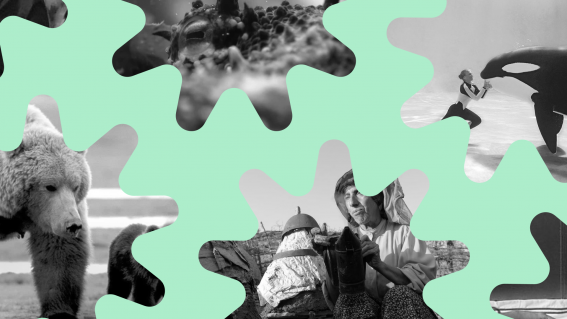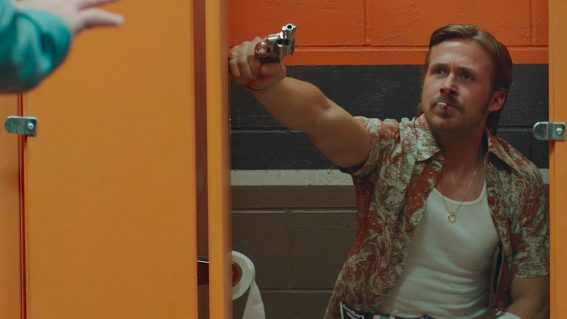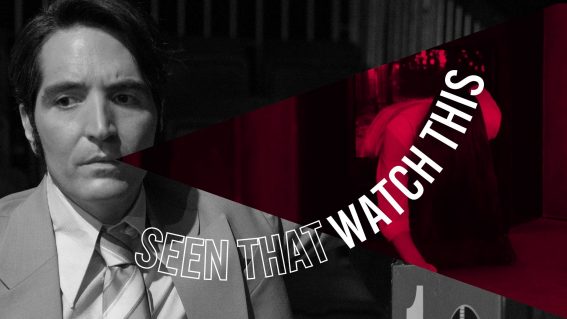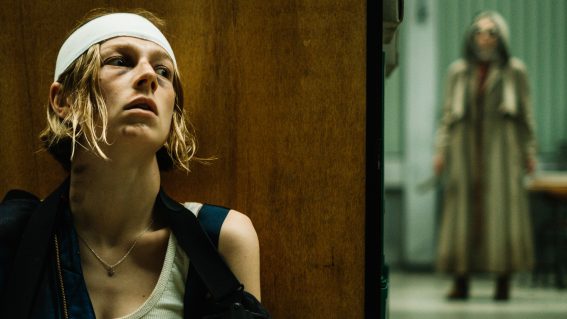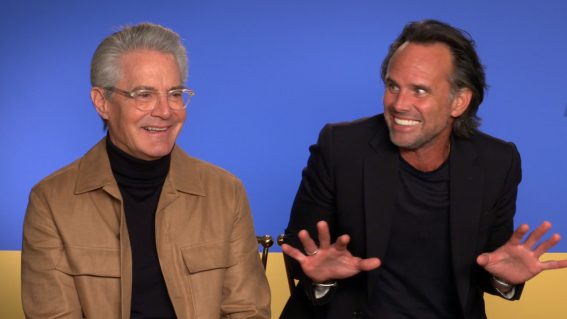THEMES, GUTS & ORIGINALITY: The Art Of Building A Better Film
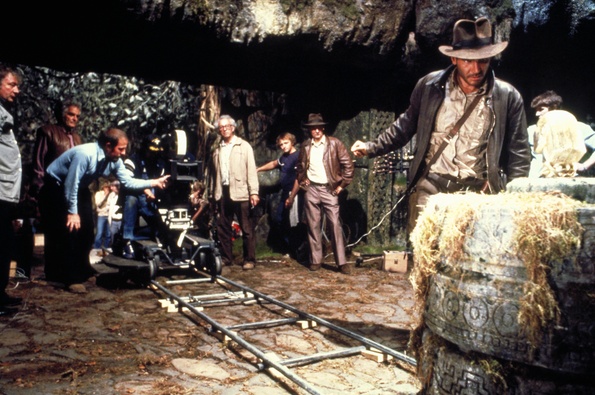

The filming of "Raiders Of The Lost Ark"
If you listen to movie buffs today, especially younger ones who were children in the 1980’s, 1970’s or earlier, then you will probably be informed that we are living in an age of creative bankruptcy in films.
Hollywood’s reliance on novels, games, comics, TV shows, remakes and projects fostered by artists whose only feather in their respective caps is “they turned something in on-time, on-budget and didn’t cost us the farm” seems to have seriously burned the larger audience out there, particularly with the advent of internet film culture where fans and audiences are able to read reviews, compare notes and, for the most part, realize that they’re not getting the best bang for their buck as a film’s advertising may promise.
Assuming that this is true, what are the elements are missing in modern Hollywood that makes today’s landscape so dull and lifeless compared to the heyday of the 1980’s or the 1960’s or even the 1930’s and 40’s? Average joes complain about originality, critics and buffs bemoan the lack of themes and messages, fanboys and fangirls claim that movies these days just don’t have any guts.
Is this true? Possibly.
Read on and let’s dissect some film history along the way.
If there’s one thing that pop culture, let alone cinema or Hollywood specifically, does more than anything; it is ‘imitation’. As some say, imitation can be the greatest of all compliments, but does imitation always make great entertainment? Not really, specifically when the entertainment doesn’t derive from the fact that it is imitation. But imitation is a sin committed time and time again — someone creates something novel, new, interesting, unique, experimental, edgy and, most importantly, financially successful and then everyone wants in on the act. The problem rises, however, when imitation becomes formula; when a bean-counter or a particularly creatively-stuck person resorts to the logic that “X had Y, so if our Z has Y too then it’ll be just as successful as X…riiiiiiight?” And even then…that was never much of a problem.
One of the biggest problems that we have today, that derives from the classic human behavioral model of copy-what’s-working-discard-what-isn’t is that, for Hollywood in particular, we’ve learned how to sell formula and copies back to the audience as originals. And we do it cunningly too — out in the open, with the guise and promise of quality…and a hundred million dollars worth of marketing dollars and sharp, honed and creative minds who, by right, should’ve been working on the movie rather than cutting the trailer or designing the poster or setting up the viral online campaign. Don’t believe me? Then ask yourself how many remakes/sequels/prequels and adaptations you’ve seen in the past 12 months and why did you bother to go?
Remake of "Clash Of The Titans"
So that brings up the common complaint — originality, thematic focus and guts (or at least the lack of). What are they? How do they work and why do people think they’re missing from modern Hollywood? Well…let’s pull up an example and see if we can find some answers. Take a look at this:
Sure, okay, Ghostbusters. Big deal right? Classic film, still very funny, a huge favorite, arguably never really been topped in what it does. Okay, but now I want you to watch it again and pretend that you’ve never heard of Ghostbusters. Pretend you’ve never been familiar with the concept in your entire life. Maybe (and quite likely) you’ve never even seen the original 1970’s sitcom that loosely inspired the film (which was later turned into a sequel animated TV show that was green-lit based on the popularity of the feature film). All you’ve seen to date, given the film came out in 1984, is the Star Wars trilogy, the first Indiana Jones film and a few other blockbusters like Jaws, E.T. and some others. This is a thought experiment, so you gotta pretend you’ve not seen most of the films that dominate your pop-culture-savvy subconsciousness and see the above trailer with fresh eyes and remember the whole movie with fresh eyes.
Right. Ghostbusters. A movie about three, washed-up, kooky parapsychologists who decide to go into business for themselves catching ghosts…and in the process end up saving the world from the apocalypse caused by an evil deity from another dimension. Today, a storyline like that is run-of-the-mill and you’ll find it in every movie, game, comic and TV show imaginable…but go back in time to 1984, before Hollywood was churning out superheroes and world-saving-protagonists, before Transformers and Die Hard, before Batman and the Terminator, before all of this and THINK about this concept. A movie – a laugh-out-loud-funny comedy no less – about a bunch of strange guys who want to make money catching ghosts and end up saving the world.
That’s CRAZY.
I mean who comes UP with a story like that? If you imagine yourself explaining the film’s plot to someone who’d never heard of this classic 1980’s movie then you may catch yourself going “what kind of batshit-insane movie is this?”. But through the rose-tinted veneer of time, nostalgia and the triumph of existing in a modern culture actually shaped by this film, we – as humans – have learned to parse over the the images, music and story of Ghostbusters and simply assign it as ‘cool’ without questioning the sheer insanity of the whole thing. I mean what would Eisenstein or Thomas Edison make of a film like Ghostbusters? It would probably do their heads in.
BUT…is that originality? In it’s own and rather important way, it is.
Granted there’s no such thing as true originality and Ghostbusters is proof of that. Ideas are always, in the human experience, built on concepts, theories and notions that have been suggested and/or experienced before. It’s very likely that this film was based on the 1970’s failed sitcom which actor, writer, creator and conspiracy-theorist-nut Dan Aykroyd almost definitely saw on late-night television (a law-suit was filed incidentally and was settled out of court). And there’s a long standing tradition of supernatural comedies (e.g. Abbot & Costello Meet Frankenstein) in American cinema which the original sitcom would have been based on. Also the film was never meant to be all-that-original, the first drafts written by Aykroyd was set in the mid-21 Century where the world was filled with ghosts and monsters and teams of ghostbusters, all dashing good-looking hero-types, were all competing with each other and keeping the forces of darkness at bay. And we’re all very lucky this version of the story never saw the light of day.
Ghostbusters works because, for most audiences at the time (and still today), it’s a concept, a story and a style of execution that had rarely been seen before. Hold up in Aykroyd’s garage on the island of Martha’s Vineyard, the biggest celebrity comedians of the time (I’m not kidding either, the stars of Ghostbusters were the early 80’s equivalent of our Jack Blacks, Jim Carreys and Ben Stillers) and director Ivan Reitman organically reworked a sort of budgetary and creative compromise story that pleased everyone: a comedy about a bunch of goofballs who go into business catching ghosts. But that alone doesn’t guarantee that the film will connect with its audience — especially in 1984 where the notion of special effects and fantasy were relatively new to the movie-going public. This is where the themes of Ghostbusters came in.
If you’ve survived high-school then you’re probably rolling your eyes now already: themes – the enemy of English and Media Studies students everywhere. Let me break it down for you really nice and easy…a theme is essentially a question that a movie or book or play is trying to explore or answer. The theme doesn’t have to be important or grand or epic or astonishingly complex and lofty. Themes can be mundane, they can be run-of-the-mill, they can very obvious things (though you’d be shocked how modern films lack even the obvious ones). But here’s the trick and maybe this is something that wasn’t explained to you in high school English: a theme is basically asking to you, as a reader or audience member, “why should you GIVE A SHIT?” For Ghostbusters, the question is: these guys are scientists who catch ghosts for a living and have to save the world…how can you, as an audience member, even have any sympathy for them given that you don’t understand what they do and really shouldn’t even care? The answer is in the theme and the theme of Ghostbusters is ludicrously mundane, but is a key to why it works so well with so many people across cultures, nations and ages.

Thematically ready to believe you.
The theme of Ghostbusters is that Ghostbusters is a “going-into-business” movie. Because as an audience member you can’t care about the science of catching ghosts or the struggles of saving the world or any of those things. But every person knows that money makes the world go around and every person knows how hard it must be for people who try to start a new job or run a new business. And, right off the bat, the movie becomes interesting because the central goofy trio of the film – played expertly by comedians Bill Murray, Dan Aykroyd and Harold Ramis – are the three least likely entrepreneurs you could possibly imagine. Immediately, before you add ANY other elements in, you’ve got a story with conflict that an audience can relate too and frankly there’s arguably a really funny movie if these three bozos started up a real-estate firm instead of a ghostbusting business. But the thematic structure of Ghostbusters acts as a portal for you to understand the three heroes…and suddenly everything else that they encounter feels more real and affects you emotionally because you can understand – and laugh along – with these three hard-working schmoes who’re trying to make a buck at the end of the day.
Then comes the guts part. Here’s some things you might not know about the production of the film (upon which they build on the originality of the concept and the thematically supported script):
1) Much of the dialogue in Ghostbusters is ad-libbed. Because the director and three stars were also the screenwriters, everyone felt strong about living ‘in the moment’ of these characters and extrapolating/expanding/developing many of the gags and comical dialogue on the film set. This, of course, is done today on big comedy-vehicle films…an example of this would be a movie such as Tropic Thunder. Now Tropic Thunder IS basically 90 minutes of actors who are funny (or think they are funny) adlibbing and hamming it up in front of the camera for comical effect…except that Tropic Thunder is a film where the plot is neither memorable nor important, the concept gets old in the first 5 minutes and frankly does ANYONE relate to ANY of the characters in it? Compare that with Ghostbusters and ponder on why one is so different from the other because they really shouldn’t be.
2) Most of the film’s artwork and design was organically created through a process of creative collaboration. The Ghostbusters’ equipment like the PKE Meter and the Proton Packs? They were created by consulting the actors and figuring out what kind of props would be ‘funny’ to use and make them look ridiculous on-camera. Later on art director John De Cuir would admit that they were trying ‘a little bit of everything’ to make the film memorable and if you’ll notice the film makes extensive use of gargoyles and gothic architecture to give the film a ‘haunted house’ look. Ultimately the film was not precisely planned from the get-go and many of the ideas were arrived from constant experimentation and development because NOBODY HAD EVER MADE A MOVIE LIKE THIS BEFORE.
3) The theme song? Well, ignoring the lawsuit by Huey Lewis & The News for the similarity to their track “I Want A New Drug” (Lewis was initially hired to write the theme song, but pulled out in the last minute), the usage of a thematic pop song was an eleventh-hour idea by director Ivan Reitman. Although he has given a variety of explanations over time, during filming he was unable to truly vocalize WHY he thought they needed a pop song, but he said that it ‘organically felt like the right thing the film needed’ even though he was doing it for the first time.

What all this adds up to is that the making of Ghostbusters was a process of adventure, risk-taking, making bold creative decisions and not being afraid to experiment and be collaborative. They had a crazy idea, on paper anyways, they were going to make it as a ‘going-into-business’ film which was a popular genre craze back then and they were going to be organic about the creative process i.e. the film was a collaborative process of people throwing in their ideas and seeing what stuck. And making a film like that takes GUTS. You’ve got millions of dollars on the line, bean-counters hounding you for explanations on your creative decisions and the fear/risk of your crazy notions falling flat in a darkened, audience-filled theater, but you STILL GO WITH THOSE CREATIVE RISKS because you’re smart and you’ve got the guts to follow through.
Themes, guts and originality. And it paid off because, on top of those three vital elements, it was also a well-made movie produced by talented individuals. But you may ask whether this is some isolated incident? Then let’s look at some other examples:
Back To The Future. Oh yeah. This film isn’t just one of the greatest things the 1980’s has ever given us, it is – to date – one of the most beautiful, succinct, efficient and finely-tuned examples of perfect screenwriting and execution. For my book, the movie still holds up to the scrutiny of modern eyes, even if the 1980’s pop-culture gags don’t.
Time machine movies have been around for a wee while and in the mainstream there were films like the adaptation of H.G. Welles’ The Time Machine, the famous H.G. Welles vs Jack The Ripper time-travel film Time After Time, various tacky dinosaur B-movies and the Christopher Lee tearjerker Somewhere In Time…but no time-travel movie had ever been made (or has been made) quite like Back To The Future. It’s a genre-masterpiece, it’s so well-made and so perfectly put together you can almost convince yourself that there’s a craftsmanship of divine guidance in it.

Christopher Lloyd and Michael J. Fox as the cinema's most unlikely heroic pair: scientist Doc Brown and teenager Marty McFly in "Back To The Future".
Except that the story of how it was made goes to show that the film, which seems so perfect in hindsight, was a jumble of creative, organic ideas that were crafted not because people knew how an audience would react to them (unlike today where it’s all about meeting audience expectation because you’re adapting some cartoon or comic)…but simply because they felt it would make a really swell story. Back To The Future, unlike Ghostbusters, wasn’t based on a concept or story idea. It was based on a theme, right from the mind of producer Steven Spielberg. The thematic idea was “What if we could go back in time and find out what our parents were like as teenagers?” This idea was inspired by how our parents always say life was ‘so much harder when they were kids than it is today’ and so what if you could go back and find out if this was true (and the answer, to all you kids reading this, is a flat NO – life was different, but not harder for everyone).
So, based on this theme that they wanted to explore, the process of coming up with a story began and the permutations that the early drafts of Back To The Future took would do your head in. Initial drafts included the main character Marty McFly (eventually played by Michael J. Fox) to be a girl, then a young child before he became a street-smart teenager. Likewise the time machine went from being an actual constructed machine to a refrigerator and other devices before being installed into its famous DeLorean chassis. And for the longest time, the third act of the film involved Doc Brown and Marty sneaking into the U.S. Nuclear Testing Grounds in Nevada in order to generate enough power to send Marty back to the year 1985. Even the lead had to be recast — the production shot for a week with actor Eric Stoltz before replacing him with Michael J. Fox; testament to the kind of spontaneous, roll-with-the-punches, build-on-good-ideas-ditch-the-bad-ones approach the film took.
Looking at the film objectively today, you’ve still got a host of truly outlandish and ahead-of-its-time ideas. Let’s just put aside the premise in of itself: a teenage kid travels to when his parents were teenagers, in a time-traveling DeLorean, and has to ensure that his mom and dad meet, fall in love and return to his own time (can you imagine a modern film coming out with a story like that?). But apart from that, we have a host of individually creative examples such as the hilarious scene where Marty pretends to be “Darth Vader From The Planet Vulcan” to bully his dad into asking his mom out to the prom, the famous musical sequence where he invents rock’n’roll by playing “Johnny B. Goode” (the film popularized the ‘time-travelling heroes invented everything that’s cool’ trope), the very brave idea of using teenage actors to portray themselves as middle-aged adults in the 1985 scenes or the unforgettable skateboarding chase scene (choreographed by a young Tony Hawk!) which gave the grinding urge to a larger audience of kids and teens everywhere.

Eric Stoltz as Marty McFly during the filming of "Back To The Future".
The originality of a teenager with a time machine and all the cosmic paradoxes he can cause, the thematic anchor of a person finding out what his parents were really like at his age and the gutsy execution which, to this day, still feels fresh and original and was so daring and non-contrived compared to a lot of modern films.
Want more? Try this one:
Top Gun isn’t based on a concept or a theme. It’s based on a magazine article.
No, I swear I’m not joking. The 1980’s was the dawn of the self-improvement/self-serving age and publications made millions selling dreams and high-flying (haw haw) ideas to a generation of yuppies and ambitious go-getters. One such article discussed the U.S. Navy’s elite aviation dog-fighting school, where the best pilots trained and duked it out for honor and glory, code-named TOP GUN. Fledgling producers Don Simpson and Jerry Bruckheimer read this article and thought it would make an interesting subject for a film…and here’s where things get interesting and the ‘organic’ principles of developing creative ideas comes into play in a fascinating way:
First they had difficulty getting a script written and when they eventually hunted down spec-writers Jim Cash and Jack Epps Jr, both writers avoided the project like the plague until Simpson and Bruckheimer paid for both of them to take a joy-ride in an F-14 Tomcat which convinced the writers to give the subject matter a second chance. But even then the two writers spent a year nutting out the script and being incredibly unhappy with the results. After months of conversations and consultations with ex-Navy pilots, the pair of screenwriters suddenly had an epiphany when they realized that fighter pilots talk and carry themselves the same way as American football players do: flying jets isn’t a survival thing, it’s like extreme sports!

Dogfighting as an extreme sport. Kelly McGillies and Tom Cruise in "Top Gun".
Now THINK about the plot of Top Gun. Really think about it. Think about the structure – how it opens with the near-accident, the heroes go to an elite school, the tests they undergo, the steamy romance with the instructor, the locker-room scenes, the competitiveness between the characters, the training sequences…and then the big aerial battle at the end. I’ll spell it out for you – Top Gun is a sports movie, through and through. From start to finish, the structure of Top Gun is like every baseball, football, swimming, track-and-field or any other variation of a sports film you can imagine. And this is deliberate – the screenwriters realized that this was the only way for an audience to be able to relate to the characters, what they were fighting for and what the stakes were. The thematic idea at the core of Top Gun is that it’s a sports movie with fighter jets.
Baked your noodle yet? No? Then try this one on for size:
You know how people always make fun of all the homoerotic tension in the film? The weird, strangely hilarious, sexualized dialogue between all the male pilots? The locker-room scenes where they’re all covered in sweat with nothing, but towels on? The way Val Kilmer’s character always seems to be hitting on Tom Cruise while simultaneously making fun of him? That’s not an accident.
That’s DELIBERATE.

Steady on boys!
Yes, the homoerotic tension was deliberately put into the film. No I’m not pulling your leg, this was a suggestion by the screenwriters and was built upon by director Tony Scott and all the actors (bar Cruise who reportedly protested against it) that all the male pilots would behave as if they were gay and their dogfights in the sky would be mirrored by a sort of sexual aggression against each other on the ground. This was a somewhat high-brow thematic element championed by Scott who wanted to explore the Freudian implications of the war and the phallic symbolism jet-fighters, missiles and aerial combat specifically (I’m not making this up, stop laughing!).
Other elements also come into play: the famous Top Gun soundtrack that had people clambering to put the latest pop hit on their film and sell the album for mega-profits was an after-thought when score composer Harold Faltemeyer’s music felt lacking and producers Simpson and Bruckheimer decided to replace sections of it with rock tracks. Today the same idea (for instance in your average Shrek movie *shudder*) would be very carefully and deliberately masterminded with promises and deals being cut with record labels before the film even began production.
Originality, themes, guts. These things are the foundations of the films which TODAY’S FILMS are copying or trying to recreate. There’s countless more examples: look at George Miller’s Mad Max 2: The Road Warrior. This is the film which every modern post-apocalyptic vision from Waterworld to Terminator Salvation are based on, but in the original film it’s just an organically developed extension of ideas they had developed in the first film, possibly inspired by the 1970’s fantasy art found in publications like Heavy Metal Magazine.
Or look at Beverly Hills Cop: once originally a violent and dark Sylvester Stallone vehicle (which was eventually filmed as Cobra) which became the surprise hit of the year when a young comedian named Eddie Murphy and director Martin Brest developed it into a semi-ad-libbed, very spontaneous and hip comedy which (having recently viewed it since I was about 14 years old) I must say is a really well-made and funny movie (shock horror). And the movie even has themes because it specifically talks about class-issues in America (look at the TITLE!) which becomes relevant on how the working class cop hero is treated by the people of Beverly Hills during one of America’s most self-indulgent eras in its recent history.
Pretty Woman? One of Hollywood’s most enduring chick-flick fairy-tales was once a dark and torturous film about a cocaine-addicted prostitute who wanted desperately to visit Disneyland before she died, but was transformed into a romance-film which many modern chick-flicks still attempt to emulate via the formula that the film setup.
What about Jaws? Not just your average monster movie (though a synopsis of the film would read like one), almost half the film focuses on strongly on inter-character relationships, the plight of desperate people driven to panic because of the shark that threatens their livelihoods, the odd-couple friendship between an oceanographer and a hydrophobic sheriff and who can forget the third act of the film which practically a mini-movie in of itself which plays out as soaring, whimsical adventure rather than a horror movie.
Close Encounters Of The Third Kind? One of the first (and very few) serious films made about contact with aliens from outer space that contains NO VILLAINS or evil characters, just an ensemble cast all trying to figure out a puzzle given to them by benevolent aliens from another world who are trying to make contact with humanity. That’s originality, guts and themes all in one hard volley.
The original King Kong? I mean, sure, the inspiration is obvious: Arthur Conan Doyle’s novel The Lost World, but imagine the thought processes creator Merian C. Cooper would have had to have gone through to come up with that story: Skull Island, a 25-foot tall ape, the movie crew wanting to film it, the showdown in New York on top of the Empire State Building and, most importantly, the subtle ‘Beauty And The Beast’ theme that runs through the entire film? And risk it all on the most ambitious visual effects ever produced in the history of cinema to date?
Or Chris Nolan’s The Dark Knight? Where he took a bunch of fantastical and unrelatable characters from his mediocre, previous film Batman Begins and smacked them dead-center into a world and a kind of cinematic language that audiences COULD relate to (taking huge inspiration from crime epics like Michael Mann’s Heat). It takes guts to sweep the ‘haha this isn’t real, it’s all just fantasy’ leg out from under Batman and it takes even more guts to try and jam themes (very unsubtle ones, but themes none-the-less in terms of Harvey Dent’s quest against the Joker’s chaos) into the film, but he did it and boy does it work a treat.
Or Nolan’s Inception, which just blatantly says “Fuck you” to the audience and follows up with “I’m going to do something original (but presented in the familiar heist-movie/Mission Impossible TV show format), it’s going to be thematically deep and meaningful and I don’t give a shit if you can’t keep up”…but it’s still a genre, studio, action movie.
District 9? No points there for guessing it’s themes, its gutsy execution (no stars, South African lead actor with a thick accent, semi-documentary feel, grimy and stark tone, epic action-packed finale) and its cinematically innovative approach for telling a story about South Africa’s battle with prejudism by displacing it into the realm of science-fiction.
Hitchcock’s Vertigo, Psycho or Rear Window? All based on novels and short stories, but executed with such originality and stand-out courage that they’re copied, homaged and stolen ad-nauseum into far poorer films and the originals were also veritable blockbusters of their age.
Right.
Clearly I’ve repeated myself enough. But in case you missed it, here’s the lowdown:
We live in an age where audiences are more pop-culture savvy than ever before. And to this effect, we give off a ‘desire’ that corporates and artists can perceive to be tantalized, excited and satiated by the pop culture that we grew up with. And to this effect, many of the people that work at media corporations or are artists who produce media for us to consume ALSO grew up with the same appreciation for pop culture as we did. As a result, we’re seeing a growing trend of emulation and regurgitation, but the problem is that people making this stuff don’t realize that the art THEY are emulating wasn’t created the same way.
Did the makers of Tomb Raider (game or movie) think “hey wouldn’t it be great if there was this female archeologist who traveled the world, getting into adventures and searching for treasures just like in the old Edgar Rice Burroughs novels!”…or did they think “hey, it’ll be just like Indiana Jones except she’s hot and has huge tits!”. Let’s be serious — WHICH of these two was the more likely scenario?
Sure, Tomb Raider was fine as a game and even the movie made money, so there’s no recourse for its creators. But it wasn’t Raiders of the Lost Ark was it? It didn’t blow our collective subconscious away like Raiders. It didn’t redefine the way we make movies or games. It didn’t emotionally move you, cathartically invigorate you or make you say “hot damn I enjoyed spending money on that so much I’m going to do it again tomorrow and tell ALL my friends and family about it because this is shit they have got to see/experience to believe”.
Did it? Be honest.
The films that we are copying, emulating, cloning, trying to remake, reboot, rehash, steal its bottled lightning from were films that were made organically. They were made because people took risks, were willing to experiment, were wanting to creatively stretch themselves and ultimately were the result of a kind of fearlessness that Hollywood doesn’t have at the moment. Why make the next Inception or Jaws or Ghostbusters when you can make the next Fast & The Furious or G. I. Joe. For that matter, WHAT ARE the themes of The Fast & The Furious? What IS gutsy about making a G.I. Joe movie? What is it about Transformers that makes you feel like you know exactly what the characters are feeling and so you’re emotionally there when every giant-robot-punch lands across Optimus Prime’s face that it makes you shut your eyes and look away, wincing in pai–oh, right. THAT NEVER HAPPENED. YOU NEVER FELT THAT.
Go figure.

Original? Nope. Gutsy. Nope. Themes? Are you fucking high?
These are only my personal thoughts of course. And for every Ghostbusters or Star Wars, there are hundreds of films that were made with the same adventurous spirit and the same attention to themes and emotionally-relevant content which went belly-up. Even quality films like Blade Runner or Highlander just didn’t work at the time and other films from the last 100 years of cinema STILL don’t work, despite the best of intentions.
But there’s always a perceivable line — it’s different for every person out there, but it exists. It’s a line that filmmakers cross sometimes deliberately, sometimes out of ignorance and sometimes unintentionally (the last Indiana Jones film which turned out to be a bunch-of-people’s MEMORY of what an Indiana Jones film is rather than an actual movie). But ultimately if we want better films then we have to do two things:
1) Support the films which do deliver these goods (and let me tell you something, right now these films are not coming out of Hollywood. These are the independent genre films being made by the film industries of many nations beyond the U.S.A and the U.K). Likewise when the odd blip in the radar like an Inception or District 9 comes out, you gotta hold onto what makes them so different from the usual McDonald’s-style fodder we get served.
2) Don’t give into the law of diminishing expectations. Hollywood uses your “well it could’ve been worse” mentality to rob you of your money and hours off your life because you’re willing to watch things that you know are going to be terrible, but hope that it won’t be TOO terrible. Demand better films and stop paying for crap ones, stop watching crap ones, stop justifying crap films with reasoned arguments about how ‘it could have been worse’. I’ll pick on my favorite punching bag here again: if Transformers didn’t make you duck behind your seat in terror or grip your armchair with heart-rending emotion THEN YOU WERE ROBBED OF YOUR HARD-EARNED MONEY AND LIMITED LIFE-SPAN ON THIS EARTH. Movies CAN be better than that, but only if you give Hollywood an incentive to go back to that kind of filmmaking. That incentive is your time and money.
Expect more from your movies. Expect guts, thematic depth and originality.
Just don’t expect it anytime soon.
Thanks for reading.



